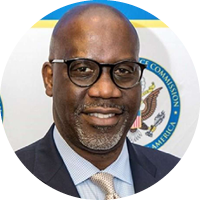By Elise Gurney, Project Manager
States are increasingly engaging in State as Model Employer (SAME) initiatives to increase employment rates for people with disabilities. These efforts are designed to increase the recruitment, hiring, advancement, retention and inclusion of people with disabilities in the state government workforce. SAME initiatives also position the state as an example for private sector employers to model.
Colorado is one state that has engaged in particularly robust SAME efforts, including through Executive Order 2020-175, issued by Colorado Gov. Jared Polis in 2020. Through the Executive Order and other initiatives, Colorado has sought to create more inclusive workplace cultures and practices within state government, enhance the accessibility of state buildings and technology infrastructure and increase the number of people with disabilities employed in state government.
Executive Order 2020-175
Executive Order 2020-175 is designed to increase equity, diversity and inclusion (EDI) within Colorado state government. While some SAME initiatives focus on advancing opportunities for people with disabilities specifically, Colorado’s Executive Order considers disability as one facet of diversity, along with gender, race, ethnicity, religion, national origin, age, sexual orientation, gender identity, citizenship status, education, socioeconomic status “or any other identity.”
The order directs the Colorado Department of Personnel and Administration (DPA) to take several actions to enhance EDI efforts within state government, including:
Developing an EDI Universal Policy to guide state agencies in creating long-term strategic plans for establishing inclusive, anti-discriminatory workplace cultures and implementing equitable hiring, compensation and retention practices. Developing and delivering EDI trainings for all state employees, including separate trainings for supervisors and executive leaders.
Developing a template and procedure for state agencies to report progress on their EDI initiatives. Creating statewide standards of accessibility for buildings, systems, communication and technology tools and other resources, at or above those required by the Americans with Disabilities Act. Guiding agencies in addressing systemic inequities in procurement.
The order further directs individual state agencies, in coordination with DPA, to “operationalize equity in systems, policies, and practices.” This includes cooperating with DPA’s efforts, as well as:
Supporting internal educational training on equity-related topics. Designating staff to coordinate and lead EDI activities, as needed. Involving community members in decision-making from the beginning to end of projects. Engaging in cabinet-level conversations about systemic inequities. Engaging with the Office of State Planning and Budgeting to budget for EDI actions in future fiscal years.
Colorado has already made significant progress in achieving these goals. DPA created EDI hiring guides for all agencies, which addressed topics like interviewing and selection. DPA also delivered introductory EDI trainings to state employees throughout 2021. By the end of the year, 89% of state employees had completed all four training modules. The state has further imbedded EDI training in the state’s supervisor training certificate program and has developed agency-specific EDI strategic plans and reports. As a result of these efforts, awareness of EDI among state employees has increased dramatically. In employee engagement surveys in 2022, 80% of employees reported awareness of EDI, up from 30% in 2019.
Colorado’s Other State as Model Employer Initiatives
Executive Order 2020-175 represents one component of Colorado’s ongoing efforts to be a model employer of people with disabilities. Colorado previously created the state employment program for persons with developmental disabilities to coordinate hiring people with developmental disabilities into appropriate and meaningful state employment opportunities. The state has also passed three relevant bills following the Executive Order:
Senate Bill 21-095 creates a hiring preference pilot program for persons with disabilities to encourage state agencies to increase the number of employed people with disabilities and improve the state’s practices on recruiting and hiring. House Bill 21-1110 requires the Chief Information Officer in the Office of Information Technology to promote and monitor the access standards for individuals with disabilities in the state’s information technology infrastructure. House Bill 22-1397 creates a Statewide Equity Office within the Department of Personnel and Administration, to provide best practices, resources and guidance for state agencies in offering equitable services to the residents of Colorado and providing an accepting and diverse environment for state employees.
The impact of these efforts can be far-reaching. Colorado is one of the largest employers in the state, with over 100,000 employees. Changes in state government hiring and employment practices can therefore impact a substantial number of people. The state’s SAME efforts have also allowed it to model inclusive practices, and develop insight and expertise, to support and encourage the private sector in its own EDI initiatives.
Colorado’s efforts represent one particularly comprehensive approach to increasing the hiring, retention and advancement of people with disabilities within state government. Through Executive Orders and legislation, the state has sought to improve workplace culture; staff awareness and attitudes; hiring, compensation and retention practices; and physical and technological accessibility. The report State as a Model Employer of People with Disabilities provides more examples of state SAME initiatives.






